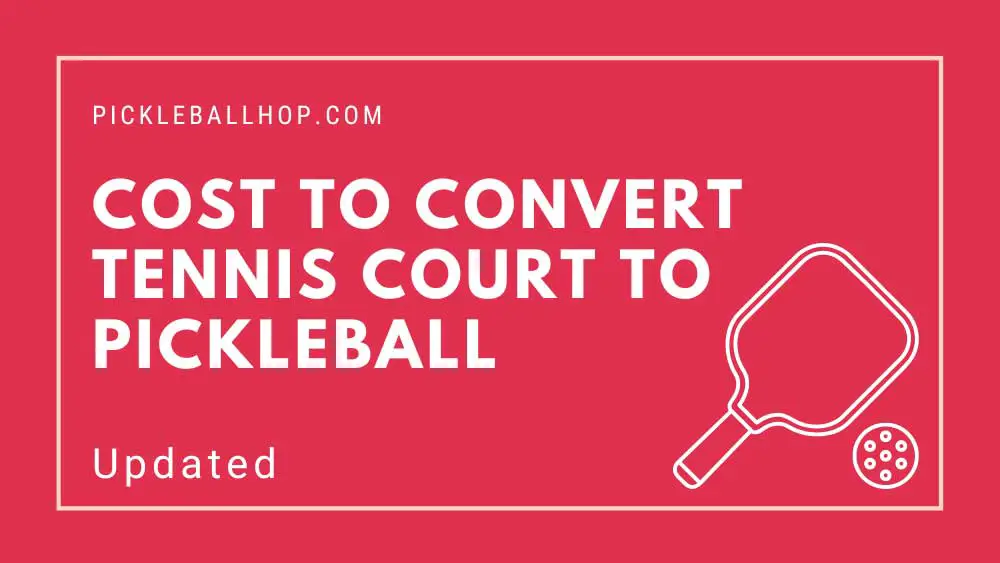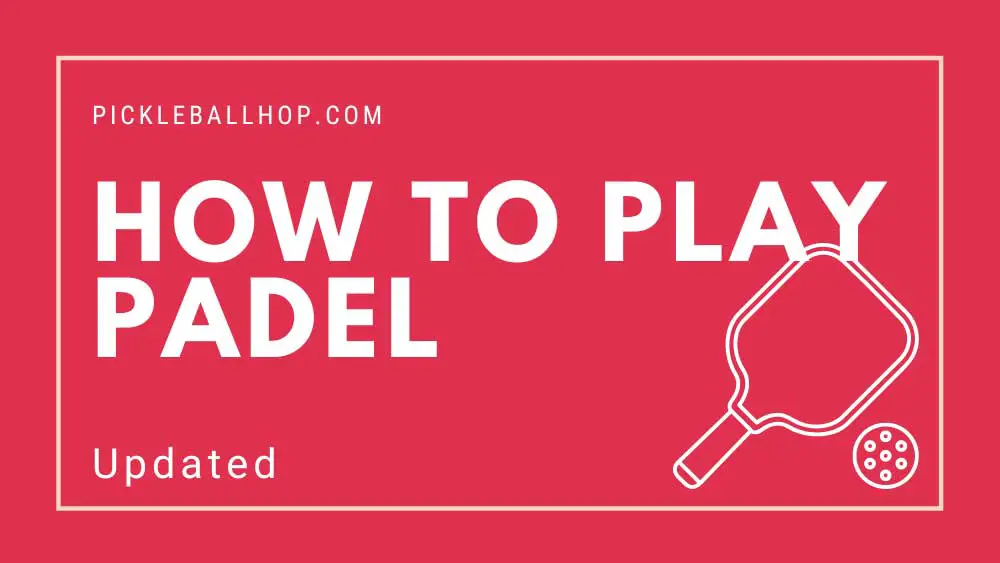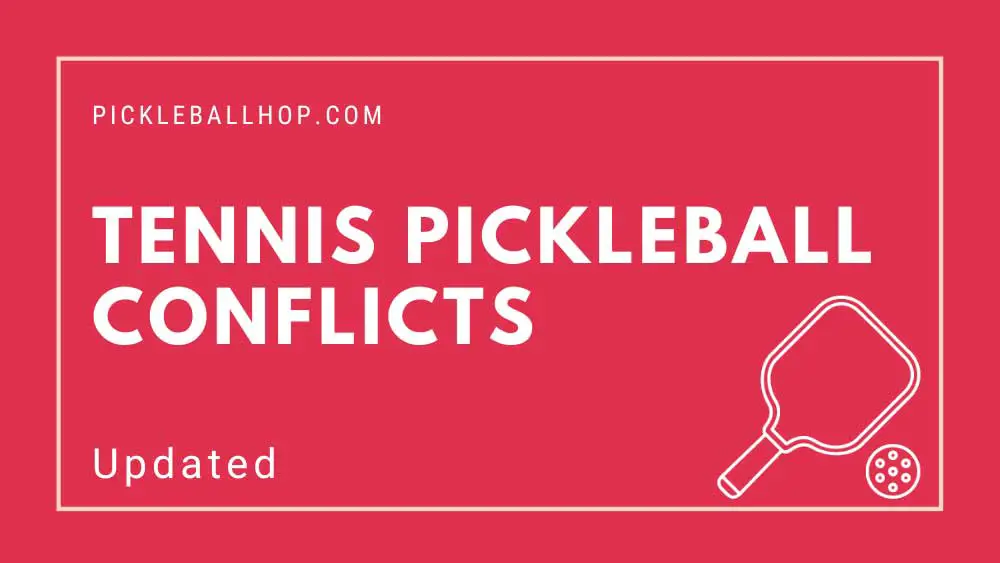Learn the basics and advanced techniques of serving in pickleball
Pickleball scores only based on your serve, so you can only score based on your serve. Serving is therefore of utmost importance. It is impossible to score without serving. And if you can’t score, you can’t win! you may enjoy reading Singles Pickleball Rules
We’ll cover the other rules that are unique to pickleball serving, so you can start playing right away. After that, we will discuss serving techniques for advanced players.
Serving Rules
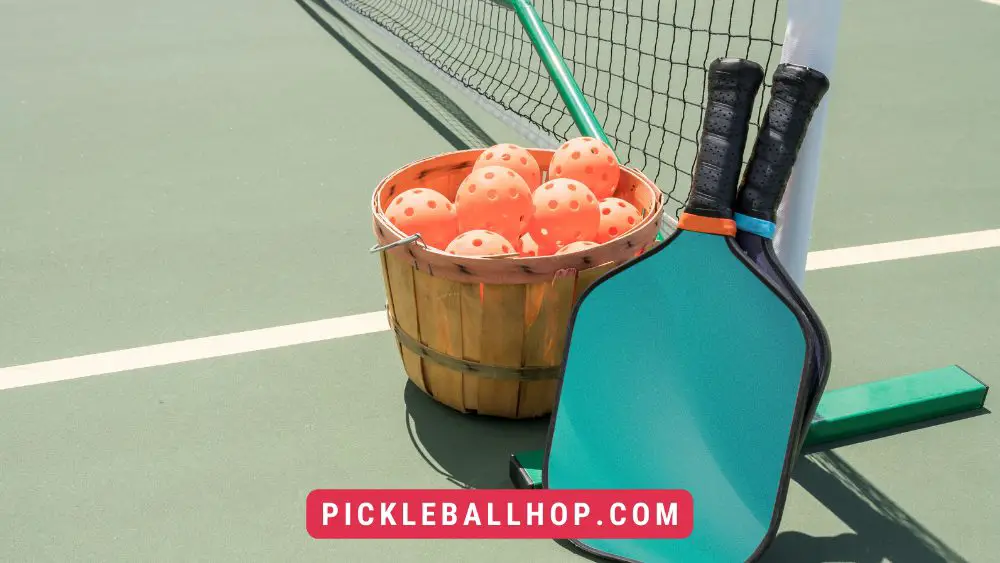 The serve must originate behind the baseline on either the left or right side of the center line. The server must announce the score before serving the ball diagonally across the court into the service area. The ball must be served underhand and below waist height.
The serve must originate behind the baseline on either the left or right side of the center line. The server must announce the score before serving the ball diagonally across the court into the service area. The ball must be served underhand and below waist height.
Neither the ball nor the line at the front of the service area may be in the non-volley zone. Any other line extending into the zone is permitted. When a server scores, they continue serving and must switch sides after each serve.
Please click here to download the Official USAPA Rulebook [PDF].
Singles Serving Rules
Singles players serve until they lose a point. The serving side must be switched after each serve. The right side of the court is the serving side in singles if the score is even.
Serving from the left is the best option if your score is odd. Whenever you call out your score, call out yours before your opponent’s.
Doubles Serving Rules
Prior to the serve switching back to the opposing team, each player on a team gets the chance to serve. First team’s second server will be skipped at the beginning of the game.
The serve begins from the right side after each sideout. Each serve is then served from the opposite side. Players’ positions, as well as their rules regarding which side will serve first, are complicated. Having an experienced player show you how to play is the easiest way to learn.
you may enjoy reading How To Score In Pickleball?
Two-Bounce Rule
A number of pickleball rules ensure the game is balanced and enjoyable. The two-bounce rule is one example. The two-bounce rules require groundstrokes for both the serve and the return. In other words, Alice will not be able to return Bob’s serve until it bounces. To return Alice’s return, Bob must wait until it bounces before he can do so.
Volleyball is allowed after the serve and first return. If the ball bounces off the ground, that is a volley. A groundstroke is when you bounce the ball before you strike it.
In Pickleball, what is a “let”?
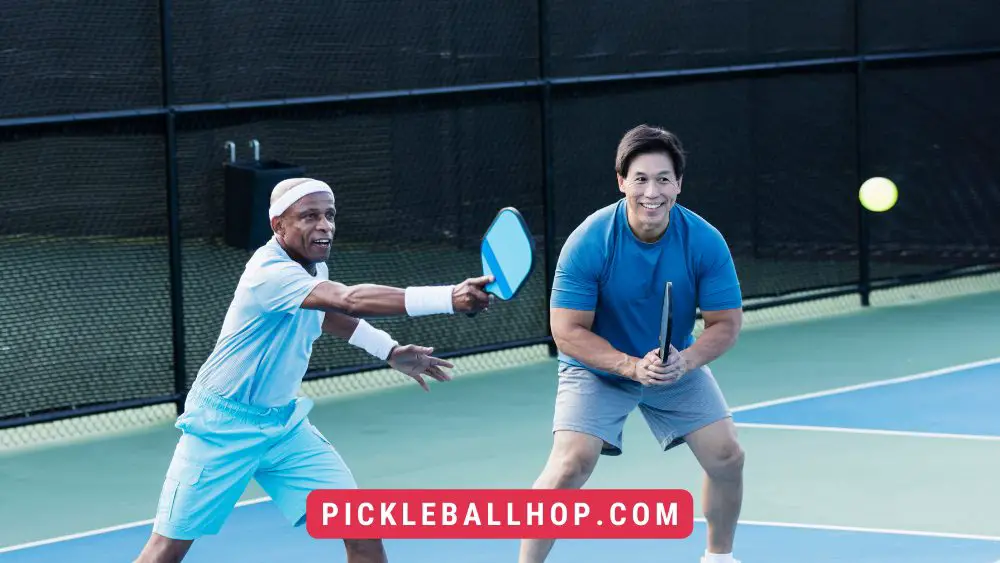 A Redoing a rally for any reason is a let. This results in no points being awarded. Something outside the game can interfere with the game. For example, your dog catches a ball and takes it off. Generally, a service let is the most popular form of letting.
A Redoing a rally for any reason is a let. This results in no points being awarded. Something outside the game can interfere with the game. For example, your dog catches a ball and takes it off. Generally, a service let is the most popular form of letting.
In this case, the ball still lands on the proper service court after hitting the net on a serve. Usually when a serve goes over the net on a serve, the ball will land on the proper service court. This serves is repeated without any penalty if it goes over the net. A let can be called by the player or referee. Consecutive lets are not restricted.
In tennis, a fault occurs when a serve hits the net but does not cross it. In addition, if the ball crosses over the net on a serve and falls outside the service court or in the “kitchen”, then it is called a fault. Any time the ball crosses the net—except when served—it is in play.
you may enjoy reading Pickleball Stacking
Detailed instructions: How to serve in Pickleball
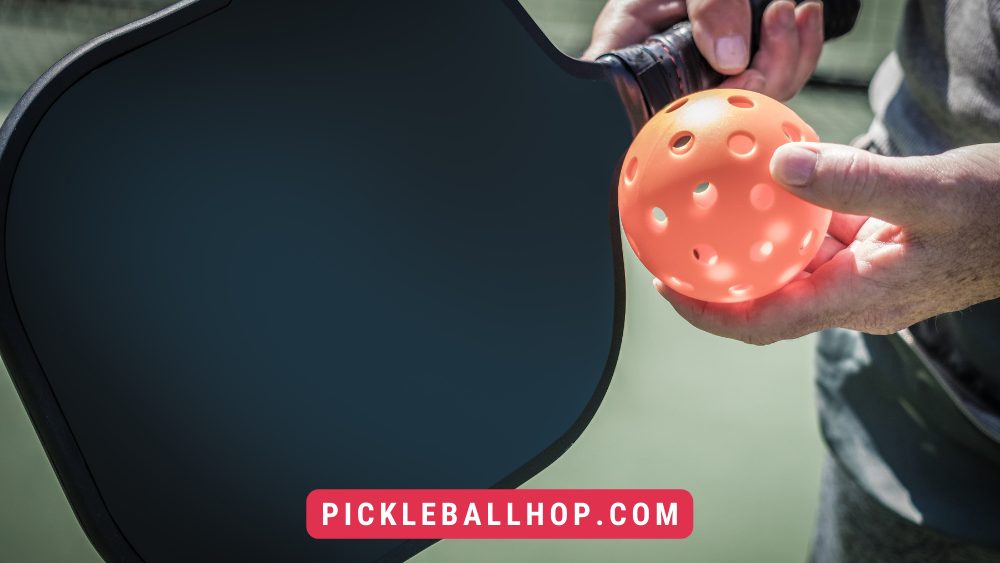 Step 1: Position yourself correctly. Depending on what you’re playing, the serving positions differ between singles and doubles as well as depending on the score.
Step 1: Position yourself correctly. Depending on what you’re playing, the serving positions differ between singles and doubles as well as depending on the score.
Step 2: Call out the score. You should always speak first. In doubles games, it is important to say the serve number before the score.
Step 3: Choose which way you want to serve the ball and where you want to aim. In the next section, we will discuss the various types of serves.
Step 4: Gather your thoughts. Take a deep breath. Just as a basketball player shoots a free throw, it helps to have a routine before serving.
Step 5: Reach out in front of you with the ball in your opposite hand and drop it. The ball should not be thrown up.
Step 6: Swing the paddle underhand and contact the ball with your body as soon as you drop it.
Step 7: Complete the process. The follow-through should be smooth and relaxed.
Step 8: Prepare yourself for your opponent’s return.
You may enjoy reading What is pickleball?
Advanced Servers in Three Types
It may take you a few games to realize how you can improve your pickleball game. The serve is one of the most important parts of the game, since you can only score when you serve. My local gym recently arranged for me to speak with some advanced players to learn about serving techniques.
Pickleball serves come in three types:
- High Soft Serve
- Power Serve
- Soft Angle Serve
There are advantages to each of these techniques. Your opponents will be surprised by your varied serves, which can greatly improve your performance.
High Soft Serve
The high-soft serve involves hitting a high trajectory deep into your opponent’s court. From beginner to 5.0 (find out more about pickleball levels), this serve can be used. The variety of this serve makes it a great way to change the pace of the match and keep your opponent on their toes.
The back or front of the serve area is the best place to aim your high-soft serve. Making an opponent move helps you set up your next shot by getting them out of position.
When to Use
It may seem better to hit the ball hard and fast. However, pickleball is more of a finesse game. The high-soft serve can be an excellent changeup if an opponent has become accustomed to returning power serves. In addition to drawing the other team closer, this serve can also be used to hit a powerful serve right past them.
you may enjoy reading How To Find Pickleball Courts Near Me
Advantages
For players of all levels, this is an excellent serve. Keep your opponent guessing by using a high slow arc. A high arc keeps your opponent’s attention off the net.
The player who receives the serve must put their own speed on the ball. Some serves can simply be blocked with the paddle by the opponent. Take advantage of that. It will increase their chances of making mistakes.
Power Serve
Power serves are deep, low, and fast into your opponents’ court. As an addition to aiming for the corner of the forehand, you can also aim straight forward at your opponent. It’s harder to perform a power serve than a high-soft one, but it’s needed for improving your game.
When to Use
You can use this shot to force your opponent to make mistakes if you know their backhand is weak. In addition, players who are not so quick will move to one side when the ball is hit straight at them. A set foot always makes returning a serve easier.
Additionally, the power serve can be combined with a high-soft serve perfectly. The other player may start moving forward after you serve a few high-soft serves. This is a great time for a power serve right at their feet if they are standing inside the court ready to return your serve.
Advantages
You need to practice this advanced serve technique a lot. With this serve, you can hit your opponent’s forehand or backhand corner, forcing them to use all of their shots.
With its speed and low arc, the serve is hard to return and limits the other player’s ability to set up shots and place spin on the ball. By using this shot, you can also keep your opponent behind the baseline, making it harder for them to move into the non-volley zone.
Soft Angle Serve
In addition to the soft angle serve and the vertical angle serve, there are three main serve types used in the game to mix things up. Usually it drops near the sideline and the kitchen line. When it bounces, the ball should leave the court. In the soft angle shot, you are aiming for a small target, so it is the most difficult of the three main serves.
When to Use
You should choose the soft angle serve if you would like your opponent to be moved off the court. On the other side of the court, this leaves a wide open lane. You can score easily if the other player doesn’t get back in position quickly enough.
If you are playing doubles with stacked opponents, you can also use this serve. The stacking strategy is used in doubles when both players are on the same side to receive the serve. The fact that both teams are on the same side means a properly executed soft angle serve can completely disorient the opposing team. It opens up a lane for the opposing team.
you may enjoy reading what are the 5 rules of pickleball?
Advantages
It is incredibly effective at putting your opponent in a bad position.
In this case, the other player will have to move a lot since the ball drops near the kitchen. If your opponent doesn’t get back in position, you can lob the ball right over their head or shoot down the opposite lane.
However, this is also the most challenging serve. The serve is crucial to scoring, so make sure you get it on court.
How to Serve an Ace
If you hit the ball hard, the pickleball ball will slow down quite a bit due to wind resistance. It is very difficult to hit a serve past an opponent because of the ball and the underhand serve rule.
Serving an ace is best achieved by first hitting a few soft short serves. The opponent will be drawn forward when you are serving. Then you can smash a power serve right at the feet of the other player when they’re standing inside the court. It won’t be easy for them to return it unless they’re very quick.
Put Spin on Your Serve
Serving with spin is another technique. Spinning the ball will be very natural to you if you’ve played other racket sports. Nonetheless, pickleball can be difficult to spin due to its smooth paddles and balls. The ball can still spin some in ping pong even though it has less spin than tennis. By adding some side spin to the ball, you will be able to make your power servers even more difficult to control. While contacting the ball with your paddle, pull it sharply toward you to spin the ball.
Practice, Practice, Practice
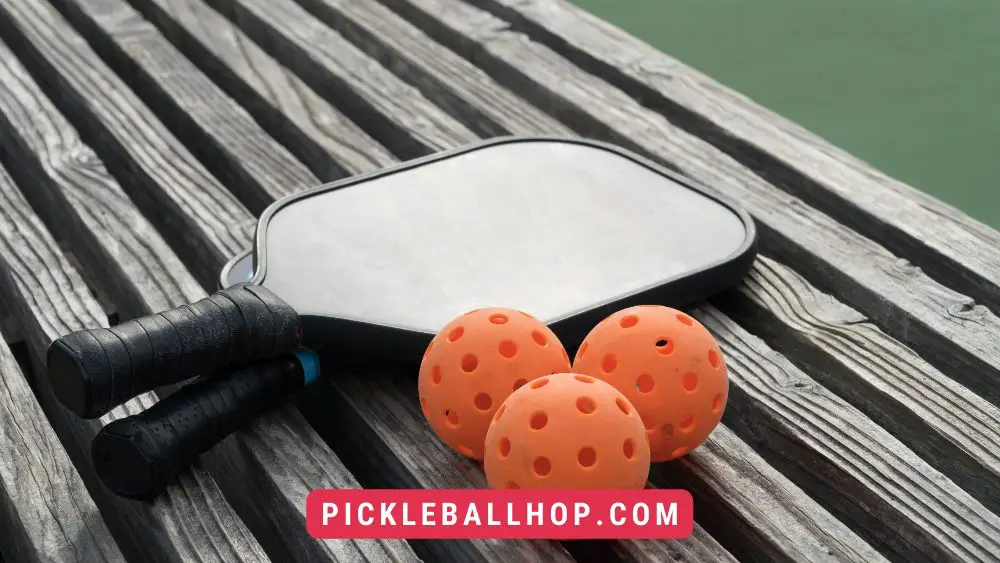 Practice is necessary for every type of serve. Playing the ball is the most crucial step in the serve. The only way to score is when you serve, so if you miss more shots with these advanced serving techniques, it can really affect your game.
Practice is necessary for every type of serve. Playing the ball is the most crucial step in the serve. The only way to score is when you serve, so if you miss more shots with these advanced serving techniques, it can really affect your game.
Besides just mixing up your serves, be sure to consider when you’ll use each serve and where you’ll place the ball.
you may enjoy reading What is the non volley zone in pickleball?

